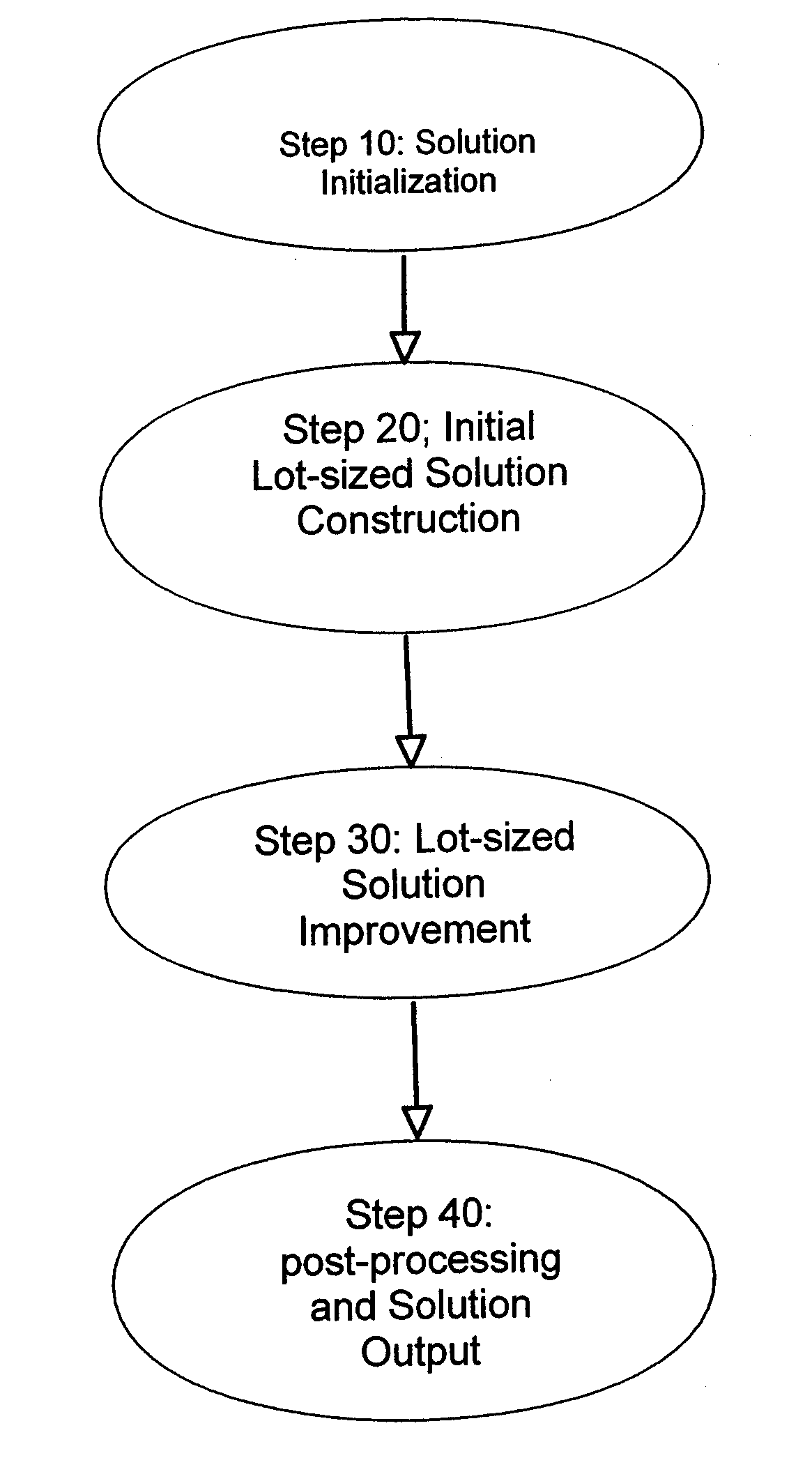Method for sizing production lot starts within a linear system programming environment
a linear system and programming environment technology, applied in the field of computer implementable decision support systems, can solve the problems of inability to explicitly consider discrete constraints, inability to solve exact mip problems, and high cost of work-centers (e.g. photolithography cluster tools), and achieve fast linear programming (lp), improve the solution, and efficiently navigate the large search space of potential solutions.
- Summary
- Abstract
- Description
- Claims
- Application Information
AI Technical Summary
Benefits of technology
Problems solved by technology
Method used
Image
Examples
Embodiment Construction
[0021]The invention starts with a production plan obtained by solving a Linear Program (LP) with continuous production start variables, referred to as the relaxed LP since it ignores lot-sizing constraints. Further steps seek to find a near optimal solution which also satisfies lot-sizing constraints. This involves sequentially modifying production start variables in the LP. Each production start considered in the LP has an associated production start variable, referred to simply as a variable from this point forward. These variables are indexed by the PN associated with the production starts, the date on which the production start occurs, the plant in the division at which the production start occurs, and the process by which the PN is manufactured at the plant. The flowchart in FIG. 2 illustrates the flow of the major steps in the algorithm that we describe below:
[0022]Step 10 (Solution Initialization): Formulate, preprocess and solve the relaxed LP using a prior art method.
[0023]...
PUM
 Login to View More
Login to View More Abstract
Description
Claims
Application Information
 Login to View More
Login to View More - R&D
- Intellectual Property
- Life Sciences
- Materials
- Tech Scout
- Unparalleled Data Quality
- Higher Quality Content
- 60% Fewer Hallucinations
Browse by: Latest US Patents, China's latest patents, Technical Efficacy Thesaurus, Application Domain, Technology Topic, Popular Technical Reports.
© 2025 PatSnap. All rights reserved.Legal|Privacy policy|Modern Slavery Act Transparency Statement|Sitemap|About US| Contact US: help@patsnap.com



